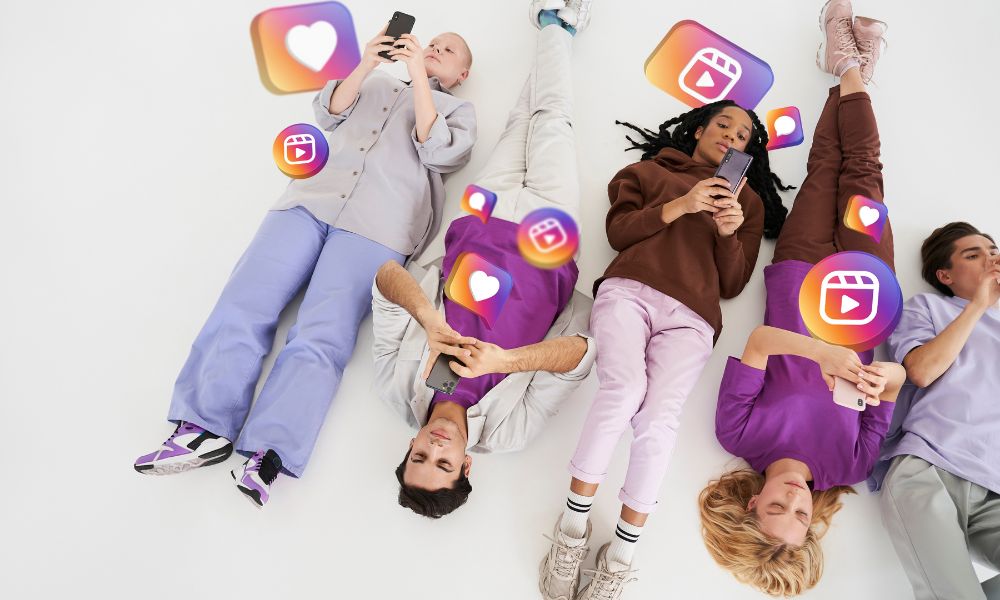
If you have ever partnered with a big general influencer and walked away disappointed, you are not alone. Many brands learn the hard way that broad reach does not guarantee real results. A creator might have a huge following, but if their audience is too diverse or not aligned with your product, engagement stays low and conversions barely move.
This is where influencer niches change everything. Instead of casting a wide net and hoping your message lands somewhere useful, niche creators help you reach the exact people who care about your product. Their audiences follow them for specific interests, problems, lifestyles or passions. That focus builds trust, and trust drives action.
Whether you are launching a new product, scaling paid social, or looking for more predictable campaign performance, working with niche influencers is one of the most effective ways to get measurable results. This guide breaks down the most profitable influencer niches right now, how to choose the ones that fit your brand, and how to use them to build campaigns that feel authentic and convert at a higher rate.
Let’s explore why niche creators outperform general influencers, which categories are growing fastest, and how your brand can use niche-focused strategies to get more value from every collaboration.
Why Broad-Reach Influencer Campaigns Deliver Narrow Results
Many brands still believe that partnering with general lifestyle influencers is the safest approach because their following looks large and active. The reality is very different. When an influencer covers too many topics at once, their audience becomes a mix of people with completely different interests. Some follow for fashion, some for travel, some for beauty, and some simply enjoy the personality. That diversity may look impressive on paper, but it rarely translates into strong campaign performance.
Imagine you’re a brand that sells high-performance running shoes. You could partner with a famous lifestyle influencer with 2 million followers. They post a beautiful picture of your shoes with a generic caption. You get a decent number of likes, but very few clicks and even fewer sales. What happened?
The influencer’s audience is a vast ocean of people interested in fashion, travel, food, and memes. Your running shoes are a tiny boat in that ocean, seen by only a handful of people who actually care. This is the fundamental flaw of the broad-reach influencer campaign.
You’re paying a premium for an audience that is too diverse. The engagement is shallow, and the conversion rates are disappointing because the message isn’t relevant to most people who see it. It’s like buying a billboard on a busy highway when you only want to reach certified accountants.
The solution is a strategic shift from broad reach to precision targeting. And that’s where the power of influencer niches comes in. Think of niche influencers as your targeting filters. Just like you would segment audiences by interests, demographics, or intent in paid advertising, niche creators give you a natural way to reach the right people without wasted spend. Their followers share similar motivations and buying behaviors, which means they react faster, engage deeper, and convert at a higher rate.
What Are Influencer Niches? (Your New Targeting Parameters)
Influencer niches are focused creator categories built around clear interests, lifestyles, problems or passions. Instead of trying to appeal to everyone, niche influencers attract audiences who gather around one specific topic. This shift from broad general creators to specialized voices is happening for a reason. Brands no longer want mass visibility at any cost. They want relevance, they want intent, they want audiences who are already interested in what they sell.
Niche creators bring exactly that. An influencer niche is a creator’s specialized, focused area of content. They aren’t just a “lifestyle” creator; they are a “sustainable fashion for petite women” creator. They aren’t a “foodie”; they are a “vegan meal prep for busy parents” creator.
Think of influencer niches as your new, most powerful targeting parameters. Instead of targeting “women aged 25-35” with a Facebook ad, you’re partnering with a creator who has already gathered a pre-qualified, deeply engaged community of your ideal customers.
From broad reach to targeted influence
The old model focused on how many people an influencer could reach. The new model focuses on how many of the right people they can reach. A niche fitness creator, a sustainable fashion advocate, or a local coffee reviewer may have fewer followers, but their influence inside that niche is far stronger than a general lifestyle influencer with ten times the audience.
Targeted influence reduces wasted impressions and increases the chances that your message resonates with people who are already open to your category.
Why niche creators convert better than general creators
Niche creators have built their audience on a foundation of trust and specific expertise. Their followers see them as a reliable source of information within that niche. When this trusted expert recommends your product, it doesn’t feel like an ad; it feels like a peer recommendation. This inherent trust translates directly into higher click-through rates, better conversion rates, and a lower cost per acquisition.
How influencer niches improve campaign ROI
People follow niche influencers because they want help, entertainment, or inspiration in one specific area. They trust these creators more because the content is consistent and the relationship feels personal. That trust makes their recommendations more powerful.
When a skincare creator recommends a moisturizer, the audience listens. When a general lifestyle creator does the same, the message gets lost among dozens of unrelated posts.
Niche alignment increases relevance. Relevance increases action.
How Influencer Niches Improve Campaign ROI
Niche-focused campaigns reduce waste and improve every metric that matters. Engagement is higher because the content fits the audience. Click-through rates improve because followers have a real interest in the category. Conversion rates increase because the recommendation reaches people with existing buying intent.
Niches help brands focus budget where it counts. Instead of paying for broad visibility, you invest in targeted influence that delivers clearer results, faster learning cycles, and stronger return on investment.

The Top Influencer Niches Dominating 2025/2026
The influencer landscape is becoming more specialized every year. Consumers are looking for creators who understand their interests, share their values, and speak their language. As a result, certain niches are rising faster than others because they attract high-intent, highly engaged audiences. Below are the niche categories that will continue to dominate brand partnerships in 2025 and 2026.
1. Beauty and Skincare Influencers
This niche continues to lead because beauty buyers rely heavily on trust and peer recommendations. Audiences expect creators to educate them, test products, and offer honest advice. Brands see strong conversion rates because skincare and makeup are personal categories where authenticity matters.
- The focus: From “clean beauty” to “skincare for melanated skin.” It’s moved beyond simple tutorials to ingredient science, dermatologist-backed routines, and hyper-specific concerns.
- Brand fit: Cosmetics, skincare, wellness supplements, beauty tools.
2. Fashion and Lifestyle Creators
Fashion creators shape trends, influence daily choices, and help audiences imagine how a product fits into their lives. Lifestyle influencers add depth by sharing routines, habits, and personal stories. This niche drives both inspiration and direct sales, especially through short-form video and shoppable content.
- The focus: Evolved into sub-niches like “slow fashion,” “thrifting hauls,” and “capsule wardrobes for professionals.”
- Brand fit: Apparel, accessories, subscription boxes, sustainable brands.
3. Fitness, Wellness and Health Influencers
Wellness creators attract communities that are highly committed to self-improvement. This niche includes trainers, nutrition educators, mental health advocates, and specialists in areas like mobility, yoga, or longevity. Their followers respond well to products that support a healthier lifestyle.
- The focus: No longer just gym selfies. Think “post-natal yoga,” “functional fitness for over-40s,” or “mental wellness rituals.”
- Brand fit: Activewear, fitness equipment, healthy food brands, supplements, meditation apps.
4. Tech and Gadget Reviewers
Tech creators help audiences make informed buying decisions in a category where research is essential. Reviews, unboxings, comparisons, and tutorials build trust and shorten the path to purchase. This niche performs extremely well for electronics, software, home tech, gaming gear, and smart devices.
- The focus: In-depth, unbiased reviews of everything from the latest smartphones to smart home ecosystems and gaming peripherals.
- Brand fit: Consumer electronics, software, apps, gaming brands.
5. Finance and Investing Creators
Financial transparency has become a priority for younger audiences. Creators who share budgeting tips, investing strategies, crypto insights, or small business advice attract a loyal and high-intent community. Brands in finance, fintech, insurance, and education benefit from this niche’s credibility.
- The focus: Demystifying crypto, explaining ETFs, and teaching personal budgeting to younger generations.
- Brand fit: Fintech apps, banking services, investment platforms, financial education tools.
6. Food, Cooking and Culinary Creators
From home chefs to bakers and meal-prep creators, this niche thrives on shareable and highly engaging content. Food creators influence grocery purchases, kitchen tools, meal kits, and dining decisions. Their content also sparks strong community involvement and user-generated content.
- The focus: “30-minute weeknight meals,” “plant-based baking,” or “authentic regional cuisine.”
- Brand fit: Food brands, kitchen gadgets, grocery delivery services, cookware.
7. Travel and Adventure Influencers
This niche benefits brands that want to inspire exploration, highlight destinations, or promote travel-related products. Travel creators offer visual storytelling that builds aspiration and emotional connection. Hotels, airlines, gear companies, and tourism boards all rely on this category.
- The focus: Shifted from luxury resorts to “solo female travel,” “budget backpacking,” and “sustainable tourism.”
- Brand fit: Luggage, travel apps, outdoor gear, airlines, local tourism boards.
8. Parenting and Family Influencers
Parenting influencers speak to real-life challenges, from newborn care to school routines. Their audiences are often highly loyal because the creator feels like a trusted friend. Brands related to household essentials, education, wellness, and kids’ products see excellent response in this niche.
- The focus: Raw and honest looks at motherhood/fatherhood, “mom hacks,” educational toy reviews, and special needs parenting.
- Brand fit: Baby products, children’s apparel, educational apps, family-friendly food brands.
9. Gaming Influencers and Streamers
Gaming audiences are passionate and community-driven. They rely on creators for reviews, gameplay insights, reactions, and entertainment. This niche is ideal for brands selling hardware, accessories, mobile games, snacks, beverages, or internet services. Engagement levels are some of the highest on social platforms.
- The focus: Live-streaming gameplay, providing esports commentary, or creating guides for specific games.
- Brand fit: Gaming hardware, energy drinks, snack brands, and any brand looking to reach the coveted Gen Z and Millennial male demographic.
10. Sustainable and Eco Lifestyle Creators
Eco-conscious creators attract audiences who care deeply about environmental impact. These creators review sustainable products, share low-waste routines, and support brands with ethical values. They are perfect partners for companies focused on sustainability, clean ingredients, or eco packaging.
- The focus: Zero-waste living, ethical fashion, reducing plastic, and conscious consumerism.
- Brand fit: Sustainable product lines, B-Corps, eco-friendly packaging, and brands with strong ESG values.
11. Pet and Animal Influencers
Pet creators bring fun, emotion, and relatability. Audiences respond strongly to content featuring pets, training tips, adoption stories, and product recommendations. Pet food brands, grooming products, and accessory companies perform especially well in this niche.
- The focus: Dedicated accounts for specific dog breeds, cat enrichment, or exotic pets.
- Brand fit: Pet food, toys, insurance, grooming products, and veterinary services.
12. Home Decor, DIY and Renovation Creators
This niche has exploded thanks to the rise of home improvement content. DIY creators, interior stylists, and renovation storytellers attract an audience ready to buy tools, decor, furniture, and organizational products. Their before-and-after content drives strong engagement and inspiration.
- The focus: “Rental-friendly upgrades,” “maximalist decor,” or chronicling a full home renovation.
- Brand fit: Furniture, paint, home goods, power tools, and craft supplies.

How to Identify the Right Influencer Niches for Your Brand
Choosing the right influencer niche is not about finding the biggest creators or the most popular categories. It is about choosing the creators who speak directly to the people who are most likely to buy from you. When you approach niche selection with a strategic, audience-first mindset, every part of your campaign becomes more efficient. You reach the right people, deliver stronger messages, and generate better results with less waste.
Below is a simple framework that helps brands choose niches based on customer identity, product fit, competitor activity, and real audience data.
Step 1: Map Your Customer Avatar to Niche Interests
Start by identifying what your customer truly cares about outside of basic demographics. Go deeper. Consider their hobbies, routines, values, and online habits. What do they watch for fun, who do they trust for advice, and which communities do they emotionally identify with?
A skincare customer may also follow wellness creators. A pet owner may watch home decor accounts because they care about maintaining a clean space. A gamer might also follow tech reviewers.
Think about where your ideal customer spends their digital leisure time. That is where the right influencer niche lives.
Step 2: Analyze Your Product’s Place in the Customer’s Life
Brands often limit themselves by describing products too narrowly. Instead of asking what your product is, ask what world it belongs to.
A microphone is not just a piece of hardware. It is part of the streamer lifestyle niche.
A blender is not just a kitchen tool. It belongs in the healthy eating niche.
A planner is not just stationery. It fits into productivity and self-improvement communities.
Reframing your product inside a niche mindset helps you naturally align with communities that already exist and care about the problem your product solves.
Step 3: Conduct a Competitor and Complementary Brand Analysis
Look at brands in your space and in related categories. Which niches are they partnering with? What types of creators seem to generate strong engagement or visible results?
You are not trying to copy competitors. You are trying to identify where interest already exists. If complementary brands are performing well in specific niches, that is a strong signal that the audience is active, high-intent, and open to similar products.
This also shows you which niches might be saturated and which ones still offer room to grow.
Step 4: Validate Niche Viability with Social Listening Tools
Once you have a few niche ideas, verify them with data.
Use social listening and audience analysis tools to understand:
- the size of the community
- the level of engagement
- how often your product category is mentioned
- sentiment around relevant topics
- trending hashtags or micro conversations
You want to avoid niches that look interesting but have low activity. Strong niches have ongoing conversations, steady audience growth, and consistent content from their creators.
Step 5: Match Niche Depth with Your Budget and Goals
Not every niche fits every campaign goal. The size and depth of the niche should guide where you invest.
- Deep niche: small audience, very high trust
Best for: conversions, UGC, authentic product storytelling - Mid niche: moderate audience, strong trust
Best for: balanced campaigns that mix reach and conversion - Broad niche: larger audience, lower trust but bigger exposure
Best for: awareness, product launches, top-of-funnel visibility
Choose your niche based on what you want to achieve.
If the goal is conversion or content creation, deeper niches deliver the strongest performance.
If the goal is awareness or brand visibility, broader niches work better.
Matching niche depth with budget ensures you get the maximum outcome for the resources you put in.

The Fastest Growing Influencer Niches Right Now
The frontier of influencer marketing is in these hyper-specialized, high-engagement micro-communities. Getting in early here can yield incredible brand loyalty.
- AI influencers and virtual personalities: Computer-generated characters with unique personalities and backstories, offering total brand control and a “wow” factor. This niche is especially strong in fashion, beauty, gaming, and futurist lifestyle brands.
- Local and hyper-niche influencers (neighborhood-level creators): Creators who dominate a specific city or even a neighborhood, offering unparalleled relevance for local businesses or geo-targeted campaigns. This niche is perfect for retail, restaurants, events, and local service businesses.
- UGC creators specializing in specific product types: Creators who are masters at showcasing a certain category, like unboxing tech gadgets or demonstrating clothing hauls, in a raw, authentic style that feels more relatable than polished. They are ideal for e-commerce and high-volume DTC testing cycles.
- Wellness micro-niches: sleep, mental health, longevity – Moving beyond general wellness into specific pillars of health, attracting audiences with acute, unmet needs. Brands in supplements, wearables, wellness tech, and lifestyle products perform well in this space.
- Micro food niches: baking, healthy lunchboxes, home chefs – Food creators do not need millions of followers to influence buying behavior. Micro food niches like home bakers, meal prep creators, healthy lunchbox moms, and kitchen organization influencers often drive high engagement from highly motivated audiences. These creators inspire daily habits, so product recommendations feel natural and timely. Brands in cookware, groceries, appliances, and meal kits thrive here.
- Niche gaming categories: mobile gaming, strategy, esports commentary – The gaming world is vast. These sub-niches offer access to dedicated, high-spending segments of the gaming community. These audiences rely on creators for guidance and opinions, making them ideal for hardware brands, snack companies, internet providers, and gaming accessories.
Niche Influencers vs General Influencers: Which Drive Better Results
Let’s make a direct comparison. For most brands focused on measurable outcomes, niche influencers are the clear winner.
- Niche creators build deeper trust because they are seen as specialists, not generalists.
- Their audiences are more problem-aware and actively seeking solutions and recommendations within that niche.
- They often deliver higher ROI for lower cost due to higher conversion rates and often more affordable partnership fees than mega-influencers.
- They reduce the risk of mismatched audiences, ensuring your product is seen by people who are actually likely to care.
General influencers still have a place for mass-brand awareness campaigns, but for driving action and sales, a niche is your most powerful lever.

How to Find and Vet Niche Influencers at Scale
Once you’ve identified your niche, how do you find the right creators efficiently?
- Use data to validate audience relevance. Do the creator’s followers match your target demographic and interests?
- Look beyond follower counts and prioritize engagement quality. A 10,000-follower account with a 5% engagement rate is far more valuable than a 100,000-follower account with a 0.5% rate. Read the comments, are they genuine and on-topic?
- Analyze past brand collaborations for fit. Have they worked with similar brands? How did their audience respond?
- Use influencer discovery tools to speed up research. These platforms allow you to filter creators by niche, audience demographics, and engagement metrics instantly.
- Check for fraud, fake followers and inflated metrics. Use third-party tools to analyze an influencer’s audience quality and ensure you’re partnering with an authentic voice.
How Different Platforms Shape Influencer Niches
The platform dictates the type of niche that thrives.
- Instagram niches are highly visual, fast-moving, and trend-driven (e.g., fashion, beauty, home decor).
- TikTok niches thrive on authentic storytelling and viral micro-communities (e.g., bookTok, cottagecore, specific dance trends).
- YouTube niches offer long-form authority and evergreen views, perfect for deep dives (e.g., tech reviews, educational content, cooking tutorials).
- Pinterest and blogs work well for evergreen search niches where users are in planning mode (e.g., wedding planning, interior design, DIY projects).
- LinkedIn is ideal for B2B and professional niches where thought leadership and industry expertise are valued.
Crafting Campaigns That Resonate Within a Niche
You’ve found the perfect niche influencer. Now, you need a campaign that respects and leverages their unique community.
- Co-Creation is Non-Negotiable: Leveraging the Creator’s Expertise
Give the creator a clear goal and key messaging, but trust them to translate it for their audience. They are the expert on what will resonate. A scripted, rigid brief will fall flat.
- Speaking the Language: Adapting Your Brand Voice for Community Culture
Immerse yourself in the niche. Understand the inside jokes, the common pain points, and the values of the community. Allow your brand to speak that language authentically.
- From Transaction to Integration: Weaving Your Product into the Narrative
Don’t just have the creator hold your product. Have them use it to solve a problem their audience faces. The product should feel like a natural, helpful part of the creator’s world, not an interruption.
Measuring the Impact of Your Niche Influencer Strategy
A niche-focused strategy only works when you can clearly see how it affects engagement, conversions, and long-term brand perception. The goal is to measure both immediate performance and the deeper impact that comes from reaching highly aligned audiences.
Tracking niche-specific conversion and engagement rates
Look at actions that signal real interest, such as comments, saves, shares, clicks, and conversions. These metrics show how well your message resonated within the niche.
The long-term value: audience sentiment and brand affinity
Monitor how the community talks about your brand over time. Positive sentiment, recurring mentions, and increased trust show that your partnership had lasting influence.
Performance cost metrics: CPM, CPE, and CPLC by niche
Compare cost per impression, cost per engagement, and cost per lower funnel action across different niches. This helps you identify which communities deliver the highest ROI.

The Future of Influencer Niches Is Depth, Not Size
The influencer landscape is moving toward deeper trust, smaller communities, and creators who build real relationships with their followers. Audiences now prefer specialized voices who understand their interests and speak their language, rather than general influencers who try to appeal to everyone. Brands that embrace this shift gain access to communities that are engaged, motivated, and ready to take action.
Niche influencers will continue to shape how brands launch products, build awareness, and drive conversions. Their focused content, consistent storytelling, and loyal audiences make them powerful partners for both new and established brands. As platforms evolve and consumer behavior becomes more fragmented, the brands that choose depth over size will see the strongest long-term results.
The future belongs to brands that partner with creators who feel like part of the customer’s world. When your message fits the niche, the audience responds with curiosity, trust, and real enthusiasm.
If you’re ready to operationalize this strategy and manage everything from discovery to payment on a single platform, explore our end-to-end influencer hiring platform.



